How to Treat Fairy Ring Lawn Disease
Despite its name, there are no fairies to be found in Fairy Ring Lawn Disease. This lovely sounding disease is actually caused by an abundance of organic matter in the lawn, ...

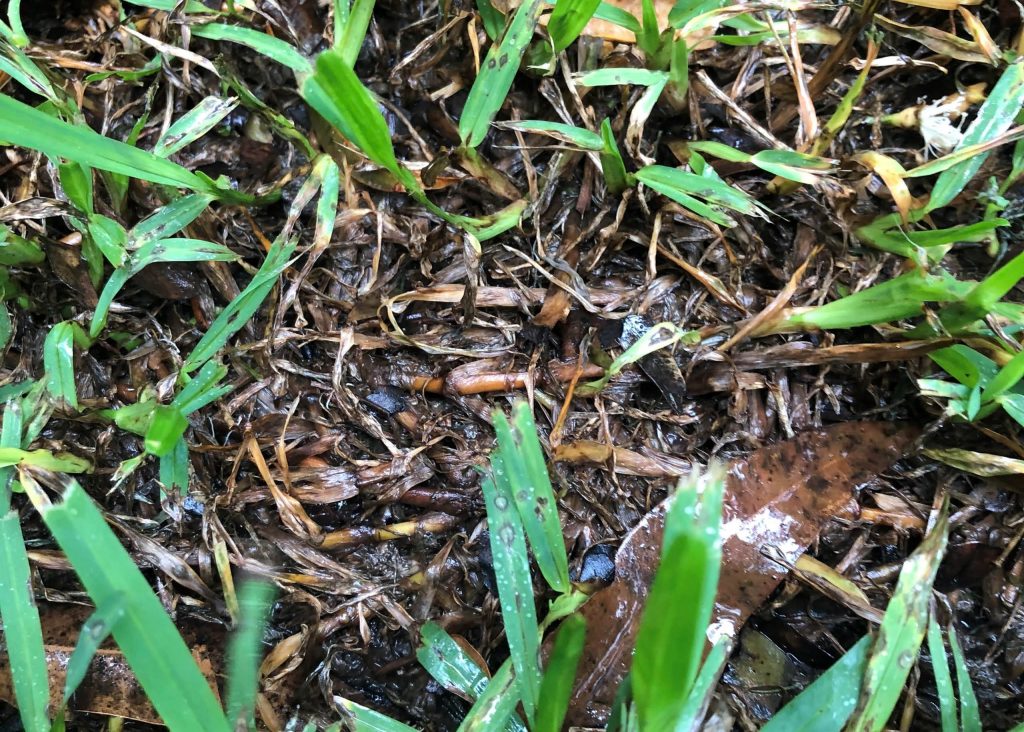 Grey Leaf Spot is a fungal disease that can affect both grassy and broadleaf plants. The disease is often a problem during wet and humid spring weather. Lawns infected with Grey Leaf Spot in spring often experience a flare up again in winter as temperatures cool.
Grey Leaf Spot is a fungal disease that can affect both grassy and broadleaf plants. The disease is often a problem during wet and humid spring weather. Lawns infected with Grey Leaf Spot in spring often experience a flare up again in winter as temperatures cool.
Grey Leaf Spot is quite a virulent fungal disease that if left uncontrolled can wipe-out an entire lawn. Symptoms are visual to your eye with oblong dark spots seen on the leaves of grass.
To effectively get rid of Grey Leaf Spot on your lawn, it’s important to understand the symptoms of this fungal disease. In this article we’ll explain how to identify Grey Leaf Spot and some tips for preventing and treating this disease.
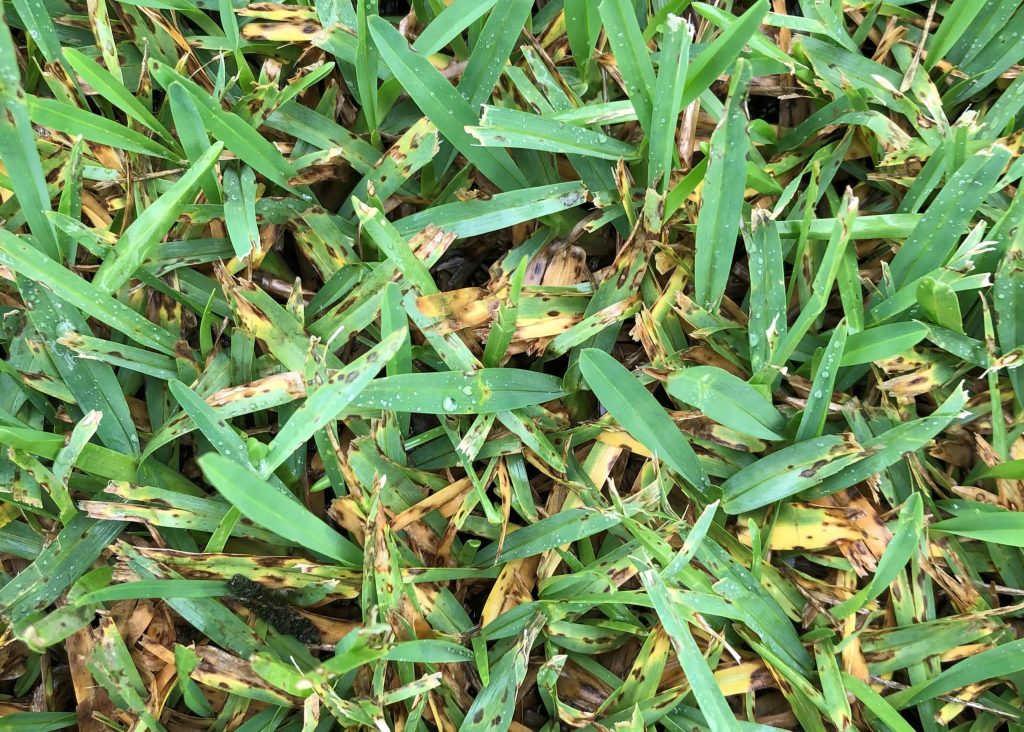 Grey Leaf Spot is a fungus caused by humidity, rainfall, shade, leaves and other debris.
Grey Leaf Spot is a fungus caused by humidity, rainfall, shade, leaves and other debris.
The first and most notable disease symptom is a round or oval spot that appears on the surface of a grass blade. This spot is typically tan in colour with a dark brown border.
Following exposure to high humidity or wet conditions, the oblong leaf spot becomes grey and fuzzy with increased sporulation growth. If not controlled, the fungal disease will expand across the entire grass leaf, eventually wiping out the lawn.
Grey Leaf Spot is most severe during the first year of newly established lawns but can become less damaging as the lawn matures.
Perennial Ryegrass is most affected by the disease, with widespread grass loss occurring in a period of a few days. For Tall Fescue and Perennial Ryegrass, most cases of the disease appear from late July through to September.
Buffalo grasses are the most resistant to the disease and rarely sustain significant damage if properly managed, however Grey Leaf Spot is most likely to be active in these grasses during spring and summer.
Grey Leaf Spot initially appears as spots on the leaves that are round or oval, tan in colour, and have a dark brown border.
When the leaves are wet or humidity is high, the leaf spots turn grey and fuzzy with significant spore production. Over time, the leaf spots expand and form a strap around the leaf, causing it to die back (or be stripped) from the tip.
Significant damage to the leaf may occur as the disease progresses and is left uncontrolled. If it becomes so severe the whole lawn may appear scorched – as if suffering from heat or drought damage.
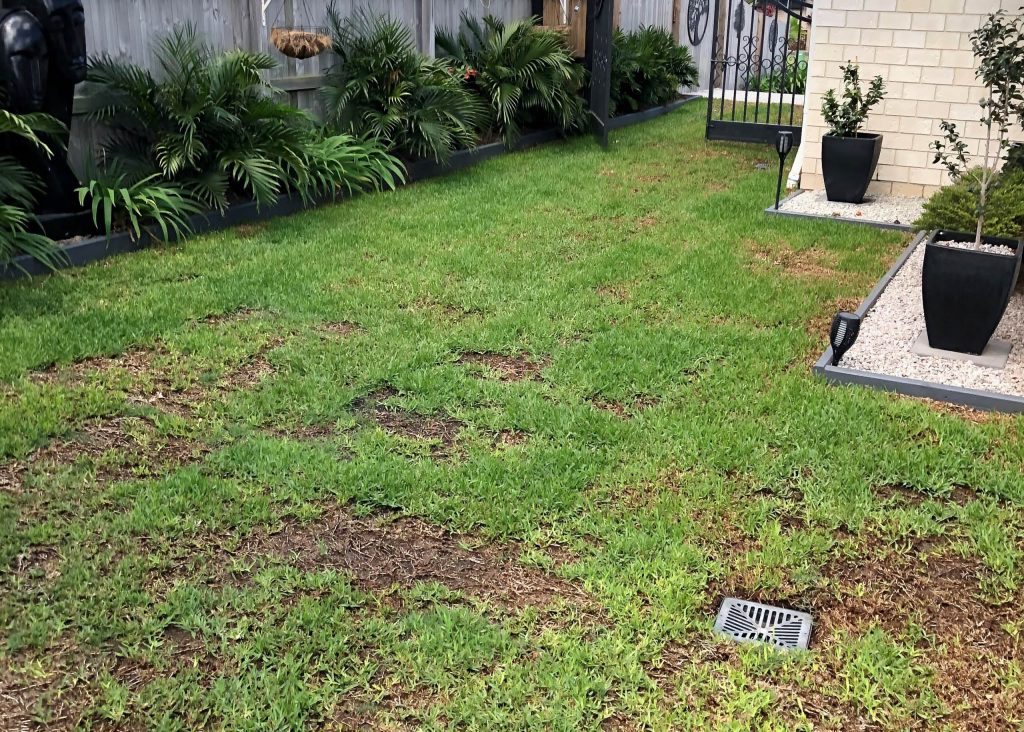 A factor that influences the occurrence of Grey Leaf Spot is temperature. Generally, the disease requires temperatures between 25 to 30 degrees Celsius in order to affect the grass.
A factor that influences the occurrence of Grey Leaf Spot is temperature. Generally, the disease requires temperatures between 25 to 30 degrees Celsius in order to affect the grass.
Additionally, the fungus requires a minimum of 14 hours of continuous leaf wetness – such as wet and humid conditions. When leaf wetness is increased by improper irrigation, cloud cover, shade or excessive rainfall, the condition worsens.
The disease can also occur if your lawn is stressed by factors such as drought, soil compaction or excessive nitrogen.
There are many preventive measures you can take to hinder the development of Grey Leaf Spot.
As with any fungal disease, water management is key to keeping it under control. Don’t overwater your lawn and limit watering to the early morning hours. Reduce thatch in the lawn with core aeration and soil bio-stimulants. Avoid over fertilising with high-nitrogen fertilisers and always mow your lawn at the proper height for your lawn variety.
If not correctly applied, fertilising your lawn may deliver too much nitrogen (especially during summer), which can lead to fungus outbreaks. There are two problems which can occur:
If Grey Leaf Spot is already present in your lawn, these cultural control methods may successfully get rid of the disease. In most cases, however, a fungicide is the best option for controlling the disease.
In short, if you do see Grey Leaf Spot in your lawn it is best to treat straight away to avoid/limit the spread.
Chlortan 1Litre Liquid Fungicide or Impala 250mL Liquid Fungicide are both premium fungicide products which can be used to control Grey Leaf Spot. In 7-10 days you should see an improvement. As with all lawn care products please read the label first before applying.
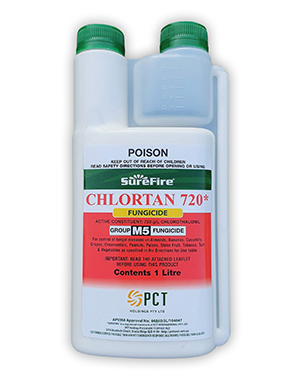
Chlortan 1Lt liquid Fungicide has the active ingredient of Chlorothalonil (720g/L) and is perfectly suited for control of Brown Patch, Dollar Spot and Grey Leaf Spot on lawns.
Chlortan 1Lt liquid Fungicide can be used on Zoysia, Kikuyu, Couch and Buffalo grasses but be sure not to mix spraying oils or wetting agents with Chlortan 1lt Fungicide.
SHOP NOW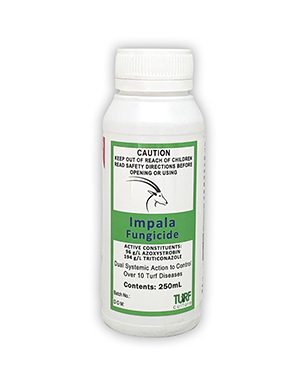
Impala Fungicide is a Broad-Spectrum systemic control liquid for 10 major turf diseases, including Fusarium, Anthracnose, Brown Patch, Dollar Spot and Helminthosporium.
Impala Fungicide contains the active ingredients Triticonazole and Azoxystrobin and is suitable for use on Kikuyu, Couch, Zoysia and Buffalo grasses.
SHOP NOWPreventing Grey Leaf Spot should focus on management practices such as avoiding high nitrogen levels, especially during mid-summer, watering deeply and infrequently, reducing thatch and aerating to prevent soil compaction.
Other strategies for preventing Grey Leaf Spot include mowing at the correct height to avoid scalping and stressing out the plant.
Use of fungicides may be a useful preventative, providing better control of Grey Leaf Spot.
For more information on suitable products to manage your lawn health, visit myhomeTURF’s online store.